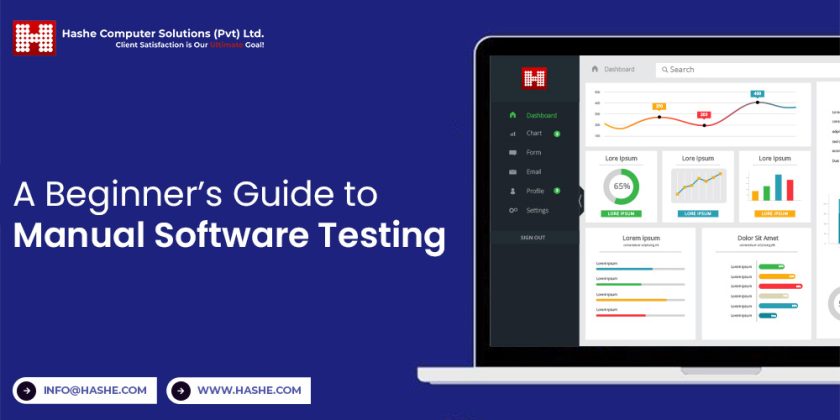The technique of manually running each test case to find flaws and errors in an application or piece of software is known as manual software testing or manual testing. Typically, software developers or the testing team perform this testing type. Developers can conduct manual tests in every SDLC stage, making it a versatile testing procedure.
Why not entirely substitute automated testing for manual testing?
Since it’s manual, this software testing procedure does not use automated testing technologies. Therefore, doing tests requires additional effort, time, and resources. So why are we still employing manual software testing techniques when we have a range of automated solutions at our disposal? To know the answer to this question, let’s consider the following points:
- Compared to automated testing, which necessitates writing a specific amount of code before you can perform the tests, manual testing can be carried out considerably earlier in the development process.
- Automated tests can occasionally be fragile and challenging to maintain, especially as the code evolves. On the other hand, manual testing is comparatively simple to modify if new features get introduced or old ones are changed.
- It is necessary to do manual software testing to confirm the viability of automated testing and the accuracy of the results.
Manual software testing is vital throughout the entire process of developing software. Therefore, automation testing will never entirely replace it. Instead, manual and automated testing frequently work together to ensure the best test results.
Manual Testing Concepts
There are six crucial concepts of manual testing, which are as follows:
- Test Case: A test case is a set of variables or situations that a software tester will use to verify whether or not an application or piece of software is operating as intended. A whole test case includes both positive and negative test scenarios. It implies that there should be at least one happy flow test case and one unhappy flow test scenario.
- Test Data: We require data to run a test case. Test data is simply the collection of inputs delivered into the system under test to see if the result is as expected.
- Test Environment: The collection of hardware, software, network configurations, and additional tools needed to test an application or software makes the environment.
- Bugs or Defects: A code error that leads to unexpected behavior in the program or software is known as a bug or defect.
- Test Cycles: A test cycle is a sequence of tasks carried out to finish a testing project for a piece of software or an application. A testing cycle typically includes test planning, test case development, test environment setup, test implementation, bug tracking and reporting, and test cycle closure.
- Test Execution: Test execution involves running the test cases and determining whether the obtained results agree with those anticipated. A mismatch is considered a failure. Otherwise, it’s a success.
What are the types of manual testing?
Manual tests are a subset of software testing methods that try to validate an application’s or program’s functionality from the end user’s perspective. Depending on the goals, some manual tests can be carried out with little to no scripting, but others need a certain level of intricacy and depth. The most typical kinds of manual testing are:
Black Box Testing
It is a way of testing software in which the test engineers are not familiar with the internal code layout of the software programs. Black box testing focuses on the specifications and requirements (Input) and the software application’s performance from the end user’s perspective (Output). It is also frequently referred to as behavioral testing or specification-based testing.
White Box Testing
White box testing involves giving the tester full access to the application’s source code and design documentation, making it opposite to black box testing. Its primary goals are to check the logic of the code and ensure all the boundaries are being tested. It is also called logic-driven testing, clear box testing, glass box testing, and path-driven testing.
Unit Testing
The tiniest testable component of a program is manually, individually, and independently tested in a unit test to ensure optimal functioning. In other words, it’s a method of testing used by developers to check out certain parts or units of an application.
System Testing
System testing is a kind of black-box testing that examines an application’s functionality from beginning to end. As its name implies, testers carry it out to determine if or not the system fulfills the criteria.
Integration Testing
It also falls under the category of black box testing. It involves examining the interactions between various software modules and determining whether they are integrated properly.
Acceptance testing
The sole objective of acceptance testing is to confirm that an application or piece of software complies with the business requirements to decide if it is suitable for release.
What are the Pros & Cons?
Besides having benefits, manual testing also has some disadvantages. Let’s have a look.
Pros
The testing team uses manual tests to find errors early in the development process, making it easier to resolve them during each test step and ensuring the quality of the final product. You can perform manual testing without the need for costly test automation solutions. Like automated tests, this sort of testing is not constrained to a particular collection of test cases, allowing for a more flexible approach. It can assist in evaluating an application’s or software’s usability more efficiently than automated tests.
Cons
The creation and manual execution of all test cases by software testers without automated tools takes more time, effort, and resources. If the test suite is extensive, it could be exceedingly tedious. Manually carrying out repetitive procedures can result in human error and inconsistent test findings. Additionally, the manual method is not appropriate for several forms of software testing, such as performance and load testing. Tools for software testing and automation will make these more effective.
Hashe is one of the leading software and web development agencies, which aims to provide top-notch software, mobile app, and web development. For more information about what we do and how we do it and for top-notch IT consultancy, contact Hashe Computer Solutions!





